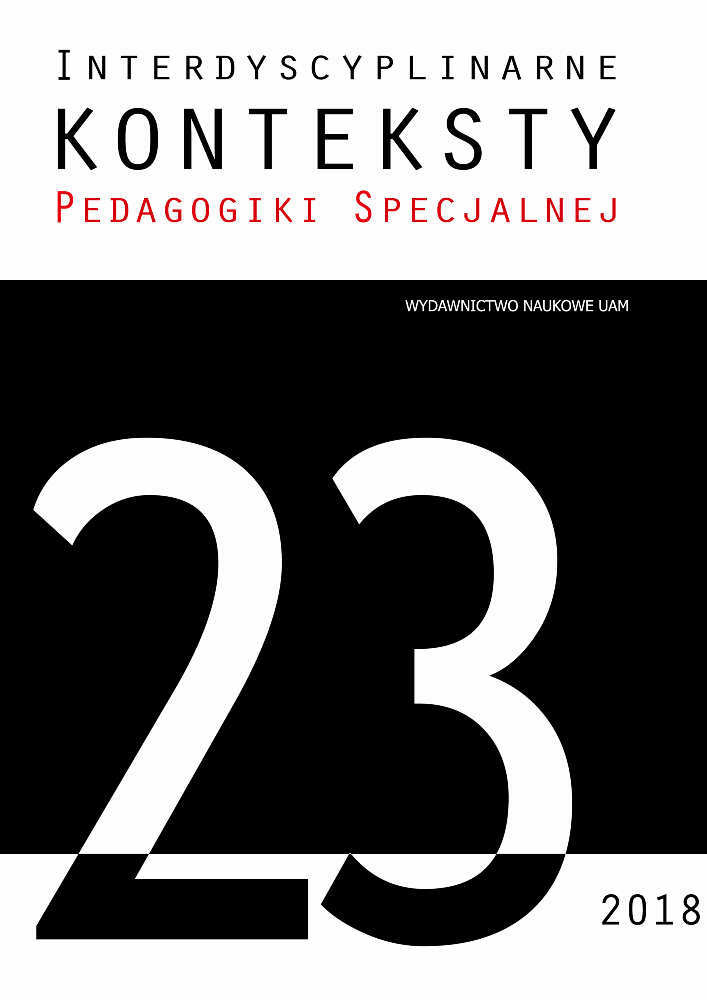Abstract
Mirosław Wobalis, Digital Communicators – creators or imitators?, Interdisciplinary Contexts of Special Pedagogy, No. 23, Poznań 2018. Pp. 117–133. Adam Mickiewicz University Press. ISSN 2300-391X. DOI: https://doi.org/10.14746/ikps.2018.23.07
The article touches upon the issue of influence of modern digital media on the attitudes of recipients/ broadcasters (digital communicators) related to their creative activities. The first indication applies to the fact that the development of digital technologies introduces a new digital order of communication (from the primary order, through the secondary and hybrid order, to the digital order), which in turn provides communicators with a broad spectrum of new methods and tools of communication 0 including tools permitting creative activities. Second of all, it is noted that despite the mentioned rich offer of digital tools and the promotion of creative attitudes, digital media, in particular global social media, are dominated by attitudes
of re-production related both to common re-distribution of existing content (sharing, copying and pasting, etc.), and even limiting creativity entirely (likes, tags). The remarks made are compared to opinions of digital media researchers and neurobiologists indicating on the one hand the weakening/ dissolution of the reception of content by digital media (the negative effect of multi-tasking), and on the other hand, the supersaturation of emotions related to the reception of content (negative influence of computer games). In conclusion, attention is turned to the necessity of establishing in contemporary communicators (on all levels of education) of digital communication competences, in particular the promotion of creative attitudes
related to these competences.
References
Bliski T., Pamięć nośniki i systemy przechowywania danych, WNT, Warszawa 2008, Witczak D., Sobkowiak K., Problemy przechowywania danych cyfrowych w bibliotekach, „Elektroniczne czasopismo Biblioteki Głównej Uniwersytetu Pedagogicznego w Krakowie”, 2014 no. 5.
Carr N., Płytki umysł. Jak Internet wpływa na nasz mózg, Helion, Gliwice 2010, pp. 145–146.
Izdebska J., Multimedia zagrażające współczesnemu dziecku, W: J. Izdebska, T. Sosnowski, Dziecko i media elektroniczne – nowy wymiar dzieciństwa. Komputer i Internet w życiu dziecka i obraz jego dzieciństwa, vol. 2, Białystok 2005, p. 108.
Jezierski E., Dynamika robotów, Wydawnictwo Naukowo-Techniczne, Warszawa 2006, Ulatowski W., Sterowanie ruchem autonomicznie sterowanych pojazdów, „Pomiary Automatyka Robotyka” 2004, no. 1.
Manovich L., Język nowych mediów, Oficyna Wydawnicza Łośgraf, Warszawa 2012.
Negroponte N., Cyfrowe życie. Jak się odnaleźć w świecie komputerów, Książka i Wiedza, Warszawa 1997.
Prensky M., Digital Natives, Digital Immigrants [in:] „On the Horizon”, Vol. 9, No. 5, MCB University Press, Bradford 2001.
Puppel S., The human communication orders and the principle of natural language sustainability, „Oikeios Logos” 2012, no. 9, pp. 9–10.
Robot artystą?, „Blog wiedzy o nowych technologiach”, [Online:] http://www.blogotech.eu/index.php/1503-robot-artysta, accessed on: 03.09.2018.
Spitzer M., Jak uczy się mózg, Wydawnictwo Naukowe PWN, Warszawa 2012, p. 113.
Toffler A., Future Shock, Bantam Books, 1970.
Wobalis M., Hybrydowy podręcznik multimedialny narzędziem czytania tekstów kultury,[in:] Teksty kultury w szkole, ed. by B. Myrdzik, L. Tymiakin, Wydawnictwo Uniwersytetu Marii Curie-Skłodowskiej, Lublin 2008, pp. 377–386.
Zacher L.W., Refleksje o ideologii cyfrowego świata, [in:] L.W. Zacher, Nasza cyfrowa przyszłość. Nadzieje – ryzyka – znaki zapytania, Komitet Prognoz „Polska 2000 Plus” przy Prezydium PAN, Warszawa 2012, p. 115.
Zając A., Uczenie się w sieci przez zapping, „Neodidagmata” 2011, 31/32, pp. 109–126.
Żylińska M., Neurodydaktyka, Nauczanie i uczenie się przyjazne mózgowi, Wydawnictwo Naukowe Uniwersytetu Mikołaja Kopernika, Toruń 2013.
